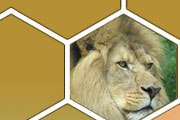

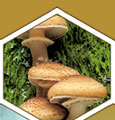
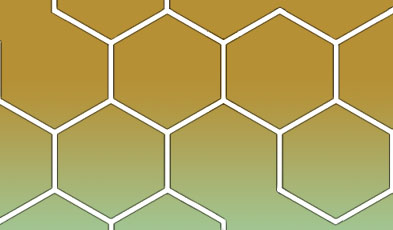
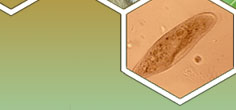
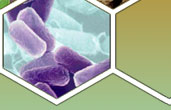
   |
 |
  |
|
Descriptions |
Genera |
|
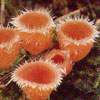 |
Ascomycota
(ascomycotes, ascomycetes) Campbell p.616-17 Some of the common species are yeasts, blue-green molds, morels, truffles, and lichens. Ascomycotes are distinguished from other fungi by possession of the ascus, a microscopic reproductive structure. About 30,000 species are known, with more than 10,000 being heterotrophic components of lichens. |
Amorphomyces Claviceps Torulopsis |
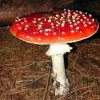 |
Basidiomycota
(basidiomycotes, basidomycetes) Campbell p.618-19 Some of the common species are smuts, rusts, jelly fungi, mushrooms, puffballs, and stinkhorns. Many basidiomycotes form important symbioses with most forest trees and shrubs, called ectomycorrhizae. |
Cantharellus Polyporus Schizophyllum |
 |
Chytridiomycota
(chytrids) Campbell p.613 Chytrids are microbes that live in fresh water or soil. They grow and feed by extending threadlike hyphae or rhizoids into living hosts, recently dead bodies, or other organic debris. Chytrids synthesize the amino acid lysine by the aminoadipic pathway. Other funguslike protoctists (oomycetes) metabolize by the diaminopimelic acid pathway. |
Blastocladiella Olpidium Synchytrium |
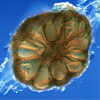 |
Glomeromycota
Campbell p.615 All glomeromycetes form arbuscular mycorrhizae, a type of endomycorrhizae with symbiotic association with roots of plants. They reproduce asexually by the formation of blastospores. |
Endogone Glomus Sclerocystis |
 |
Zygomycota
(zygomycotes, zygomycetes) Campbell p.613-15 Many are saprobic, fedding osmotrophically - absorbing nutrients - on decaying vegetation. They mate by extending outgrowths from one another and merge to become a zygosporangium. |
Chaetocladium Kickxella Pilobolus |